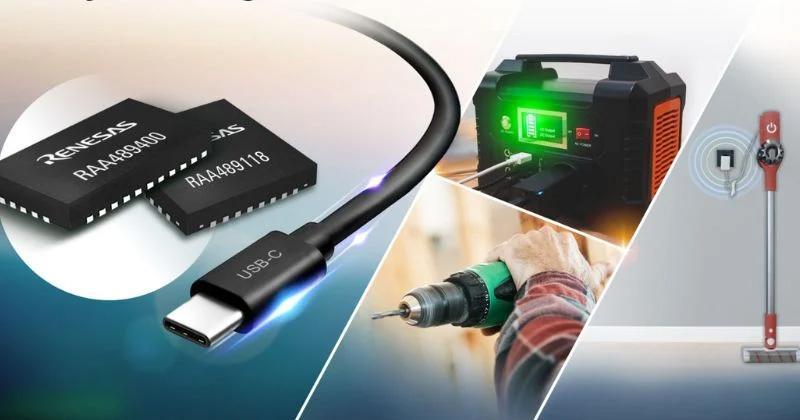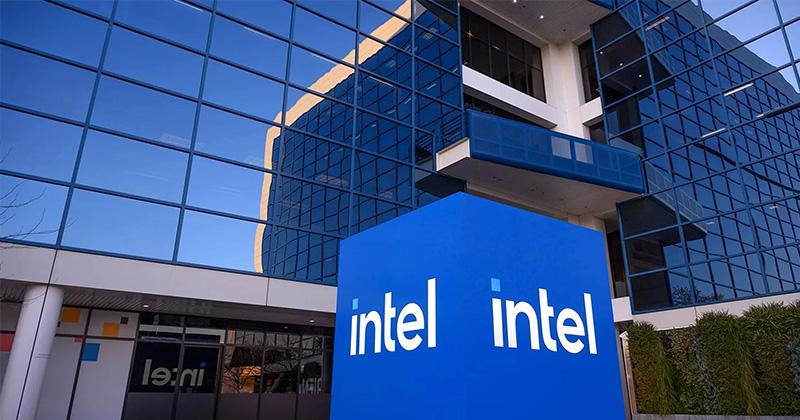
Qualcomm Keys Into AI Performance for New Industrial Processors
Qualcomm recently launched the IQ Series, a new family of industrial-grade processors purpose-built for high-performance AI workloads in the most demanding industrial environments.
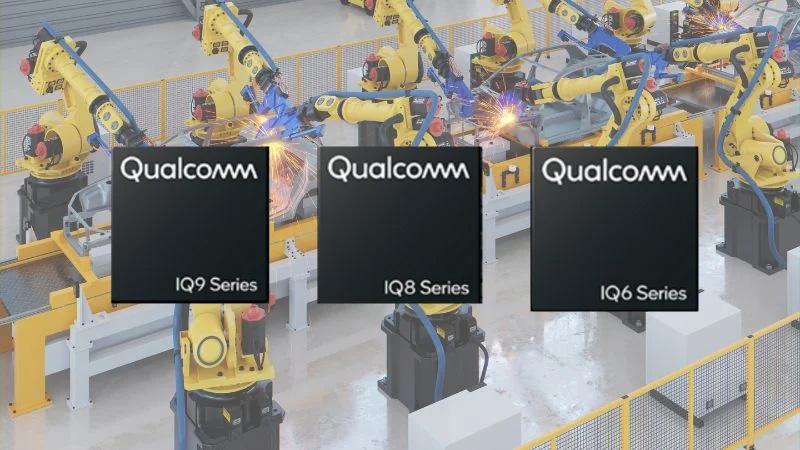
The Qualcomm IQ Series.
From industrial automation and robotics to drones and advanced machine vision, integrating artificial intelligence at the edge has transformed how fields operate. These advancements necessitate robust, power-efficient processors that can handle intensive AI workloads and operate reliably in extreme conditions.
Read on to learn how Qualcomm's three new series of industrial processors rise to meet these demands.
IQ9 Series
The c is designed for edge AI applications in industrial settings. From a compute perspective, the processor features an octa-core Kryo Gen 6 CPU, which consists of eight high-performance cores with clock speeds ranging from 1.632 GHz to 2.55 GHz. Qualcomm enhanced the platform’s flexibility by including an Adreno 663 GPU and two Hexagon Tensor processors, which the company optimized for AI-centric and machine-learning workloads. These processors integrate vector and matrix accelerators to help manage complex AI algorithms and real-time data processing. Together, this architecture delivers up to 100 TOPS of AI performance.
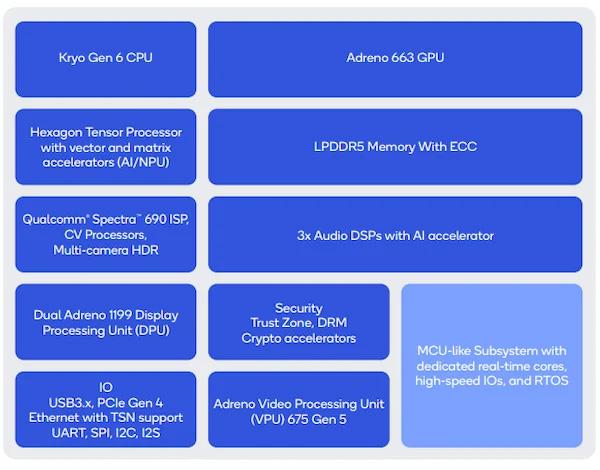
IQ9 Series block diagram.
The IQ9 Series also supports high-performance multimedia processing, which can decode 4K video at 275 fps and encode 4K at 170 fps. It supports up to 16 concurrent camera inputs and multi-camera HDR.
For industrial robustness, the IQ9 Series offers up to 36 GB of LPDDR5 memory with built-in error correction code (ECC) and operates in a temperature range from -40°C to +115°C. This is complemented by the platform’s safety features, such as a dedicated MCU-like subsystem with real-time cores for monitoring and error detection.
IQ8 Series
The IQ8 Series offers a unique combination of high performance, safety, and reliability. Its octa-core Kryo Gen 6 CPU architecture features two high-performance Kryo Gold Prime cores clocked at 2.35 GHz, two Kryo Gold cores at 2.1 GHz, and four Kryo Silver efficiency cores at 1.95 GHz. Meanwhile, the Qualcomm Adreno 623 GPU supports advanced graphics and multimedia processing, enabling 4K video encode at 85 fps and 4K decode at 135 fps. The platform also integrates a Hexagon Tensor processor with vector and matrix accelerators that can deliver up to 40 TOPS of AI performance.
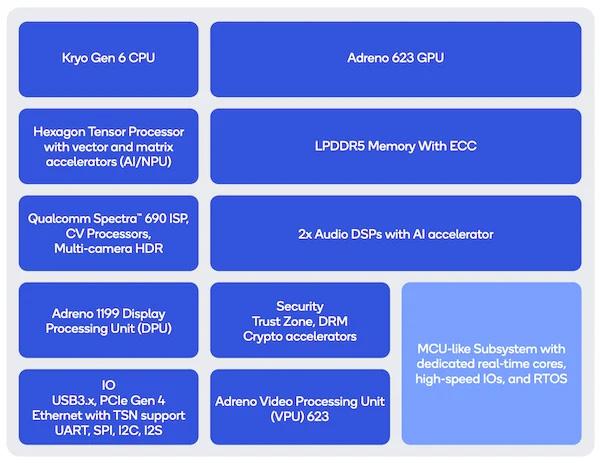
IQ8 Series block diagram.
The series features I/O capabilities, including PCIe Gen 4 lanes, USB 3.1, and Ethernet with time-sensitive networking (TSN). It supports up to 12 simultaneous camera inputs and multi-camera HDR. A dedicated MCU-like subsystem provides real-time cores and safety features, such as error detection and offloading capabilities.
IQ6 Series
Finally, the IQ6 Series is a robust and versatile platform built on an 11-nm FinFET low-power process. The system is centered around the Kryo 460 Octa-Core CPU architecture, featuring two Gold cores clocked at 1.9 GHz and six Silver-lite cores at 1.6 GHz. The Qualcomm Spectra 230 ISP and the Adreno 612 GPU enhance the platform's multimedia capabilities, allowing the system to support up to 4K60 video decode and 1080p60 encode with support for H.265, H.264, and VP9 codecs. Additionally, the platform supports up to 8 GB of LPDDR4x memory.
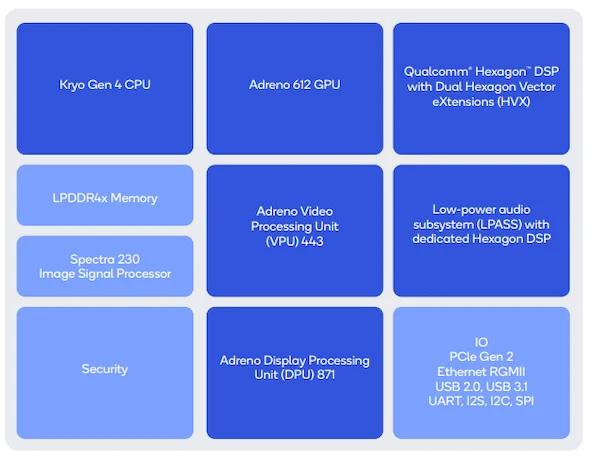
IQ6 Series block diagram.
The series also integrates a comprehensive range of I/O options, including PCIe Gen 2, USB 3.1, Ethernet, and support for multiple cameras via MIPI CSI-2 lanes. Its compatibility with OpenGL ES, OpenCL, Vulkan, and DirectX improves graphical performance, while a Hexagon DSP with dual Hexagon Vector Extensions (HVX) enables efficient edge AI processing. Connectivity options include tri-band support for communication across 2.4 GHz, 5 GHz, and 6 GHz bands and optional Wi-Fi 6E and Bluetooth 5.3.
Shaping Industrial AI
As industries increasingly adopt edge AI, fast, local processing will reshape everything from factory floors to global supply chains. Qualcomm hopes the IQ Series will meet the space's growing engineering challenges to help enable a more autonomous and efficient industrial future.


